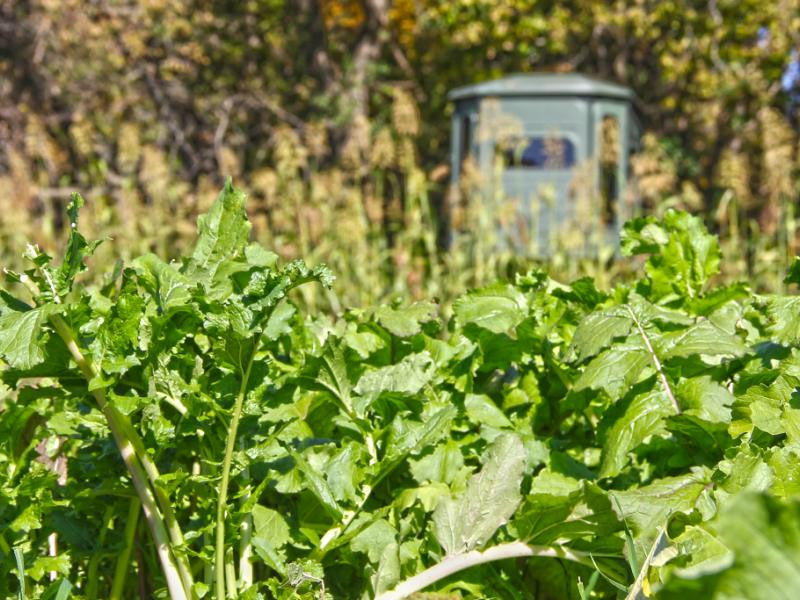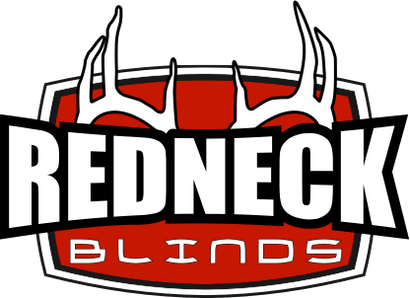
A Food Plot for Every Season
5 min read
Food plot season is here. This is a busy time of year here at Redneck Farms because we are tilling the ground, planting food plots, building bedding areas and doing many other things to prepare our property for the fall hunting season. Planting food plots is a lot of work. As a result, many hunters and land managers only plant food plots once a year with the goal of hunting over that food plot during deer season.
According to Dr. Grant Woods from GrowingDeer.TV, if hunters are going to go through the work of planting food plots, they should think about providing deer with a year around food sources. “Providing deer with food during every season helps keep the deer healthy and strong all year. Having something growing all the time is good for the soil. The crops will be pulling nutrients up through the soil year round, which is good for soil health.
I haven’t had to add fertilizer to any of my plots in two years because when each crop dies off, it drops leaves and the nutrients from the plant leach back into the soil. The process is started over so the soil is always healthy and full of nutrients. The plants act as a fertilizer for the next generation of plants that are planted quickly after the plot dies off. Constantly having crops growing saves me from having to fertilize as often,” Woods explained.
One of the first crops Woods plants is soybeans. “Soybeans are a great crop for the deer because they are full of protein and the deer love them. It is a very palatable food it lasts all summer, and is fairly drought resistant.” After the soybeans ripen and die, most hunters are deer hunting so they hunt over the beans. When deer season ends, they are done with food plots until the next year.
Woods takes a different approach. “ I plant right over the top of the soybeans in late August or September. I like to broadcast brassicas, wheat and a few other greens. As the soybeans ripen and eventually turn brown, the newly planted seed will germinate and start to come up. When the beans start to die, the sun reaches the soil and the new plants start to grow between the beans. The deer have bean pods that are ripe and give deer energy for the winter and green forage growing in the same plot, giving deer even more nutrition. It also gives them a food choice. On warm days, deer often don’t want the beans because beans have a lot of oil and energy which produces heat in their body. On these days, the deer turn to the greens. If it is a cold day, they want the energy and go for the beans,” Woods added.
Why does Woods do the extra work to provide forage after the rut? The answer makes perfect sense. “A buck can lose 30-40 percent of his body weight as a result of the rut. I want to give him as much food as possible to help him gain his weight back and make it through the winter,” Woods noted. “Body weight takes precedence over antlers so if I want the bucks to grow big racks, they must first be healthy and strong. Often deer go through a time of drought where there isn’t much food to eat during the winter, which is hard on the deer. Providing them with quality food all year keeps them healthy which can result in larger racks and healthier fawns.”

When spring arrives, the plot is still green from the seeding that was done the last summer. “In the spring, I don’t really have to deal with erosion because the crops I plant over the top of each other keep building up the soil and keep it healthy. I don’t have to worry about crop rotation because the four or five crops I planted on top of the soybeans break up the pest cycle so when it is time to plant again in spring, I just spray and plant round-up ready soybeans. I use Eagle brand.”
Woods also has a few clover plots around. “I keep about 10% of my plots in clover. Small clover plots are just coming on strong in the spring and they can outgrow my deer herd. While they are on the clover, I am planting the beans. I plant clover in my smaller plots and beans and brassicas and other greens in my larger plots. It all depends of what the deer densities are in a person’s area, but my rule of thumb is I like my soybean plots to be at least two acres in size. In areas with a lower deer density, a smaller plot can be used.
The clover plots can be smaller because when it is wet and cool in the spring, clover grows extremely fast. When spring comes, the deer will hit the small clover plots. They leave the other plots alone because the crops I planted last summer or early fall are now getting old and tough. I drill and plant the beans while the deer are on the clover which gives the beans time to get started and grow. This type of system works well because the deer always have something to eat which keeps them healthy and keeps them from loving any one plot to death,” Woods noted.
From January to March, the deer are eating brassicas and wheat. From about mid-March to June, the deer are eating the clover plots heavy. From June until August, the beans are what the deer focus most on at which point the brassicas and wheat blend is planted again and the process is started again. “One thing I like about doing things this way is just about the time one plot is maturing and getting old and not as palatable, I have something new that is palatable, young and ready for the deer to eat. I always want there to be something that is attractive and nutritious for the deer to eat on my property, not just during deer season.”
By doing what Woods describes above, planting food plots and providing food all year doesn’t have to be a ton of work. Depending on the size of a piece of property, Woods suggests having several bean/brassica/wheat plots and a few smaller clover plots. “Planting takes time, so having several small plots creates extra work. Having a few large plots and some small clover plots is easier to manage.”
If you have a small piece of property and are forced to plant small food plots, Woods suggests using the Non Typical Hot Zone Electric fence to keep deer at bay while the plot is growing.

We all love hunting over food plots, especially if it is a food plot that we planted ourselves. There is something about seeing the sweat of your brow produce a lush food plot. That said, food plots shouldn’t be something we just hunt over. Having food plots to hunt over and food plots that help keep deer healthy all year is necessary if you want the deer on your property to reach their full potential.
Leave a comment
Comments will be approved before showing up.

